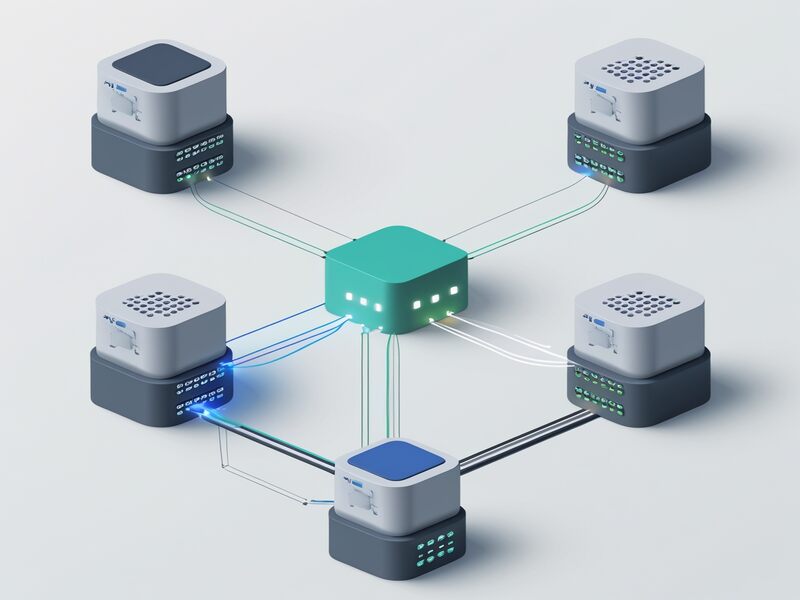Red Hat OpenShift Tutorial
Docker podman is a container runtime that can be used to create and run containerized applications. However, managing these containerized applications, especially those in their hundreds or thousands, can be challenging and often not possible to use.
This is especially true for heavy applications like core banking, which require an orchestration tool for automation and extremely high availability.
One of the containerized applications that can be managed using openshift management tools is Open Shift.
In this Red Hat OpenShift Tutorial blog, you can get to know the things about it in brief.
What is Red Hat OpenShift?
OpenShift is a container application platform that orchestrates and manages containerized applications, making it compatible with the Kubernetes cluster and Reddit core operating system.
It can be managed similarly to Kubernetes cluster but this time around using openshift management tools.

OpenShift was developed by Red Hat and is built on top of the Kubernetes cluster and Reddit core operating system.
It can be managed the same way as Kubernetes cluster but this time around using openshift management tools. OpenShift is similar to a distribution of Kubernetes, as it is built on top of Kubernetes components or objects.
Key features of OpenShift
One of its key features is “Source-to-Image” (S2I), which allows developers to create and build cloud-native applications as containers. This feature takes over the process of selecting an image, merging it with code, and building a new image.
OpenShift recognizes the type of code written, such as Java or Python, and pulls it from an image catalog.
OpenShift also provides easy networking through the use of routes.
OpenShift is a powerful tool for IT operations, particularly in day-2 operations. It offers automation for installs, updates, cluster size, and multi-cloud management.
OpenShift ensures that the platform and operating system are compatible, preventing incompatibility issues caused by incorrect OS versions. This is a key feature of OpenShift’s automated updates.
Multi-cloud management is another feature of OpenShift. When running in production, managing multiple clusters on different clouds can be challenging.
OpenShift has built-in tools for multi-cloud management, making it easier to manage across multiple clouds.
OpenShift’s security features are particularly noteworthy. It prevents users from running with scissors, such as running privileged containers as root. This is crucial for security, as it protects against vulnerabilities in large surface areas.
OpenShift requests that the container be non-privileged and ensures that the default namespace is used when deploying the container.
Architecture of OpenShift
The architecture of OpenShift is built on top of Kubernetes, which is a distributed computing framework that allows for the creation and execution of containerized applications.
The open shift architecture consists of an openshift cluster, which consists of some nodes joined or clustered together. This cluster joins together components or features together in components or features together. The master node, also known as the control plane, provides basic services that manage the cluster. The openshift cluster and worker are two separate nodes, or compete nodes, where your application resides.

The master node is responsible for managing the cluster and its components, while the control plane provides basic services that manage the application. The openshift cluster and worker are connected by a network of nodes, which can be either physical or virtual.

Red Hat Training

OpenShift Cluster
The OpenShift cluster is a distributed computing system that uses worker nodes to manage the workload and resources. These worker nodes hold the workload, which is then distributed among the worker nodes, which are the server nodes.
The worker nodes have more resources than the master node, which is the master node. The info node, or infrastructure, is used to host infrastructure services such as monitoring login and other related services.
In an OpenShift cluster, there must be at least three control planes and two worker nodes.
The services that must be present in these nodes include the Red Hat Core Operating System (RHCOS), the Article Operating System (AOS), the Container Runtime (Kubernetes Native Container), the Kubernetes Cubelet Service, and the Kubernetes Queue Service Interfaces.
The Kubernetes Native Container Runtime is responsible for running the containers and the Costa Containers.
The Average Cos (ACS) is a component that consists of the ignition, which is used by the OpenShift cluster.
OpenShift API Server
On top of the Kubernetes cluster, there is an open shifts layer that consists of the openshift API server, the openshift controller manager, the openshift OAUTH API server, and other services. These services are necessary for the proper functioning of the Kubernetes cluster.

The openshift API server communicates with the Kubernetes API server, which then communicates with the openshift API server. The openshift API server validates and configures data for openshift resources, such as templates, projects, routes, and more.
The openshift controller manager ensures that the openshift cluster object is in its desired state.
OpenShift OAuth
The Openshift OAuth is a system that monitors the etcd for changes in openshift objects and uses the API to enforce the specified state. It is responsible for integrating a method of external authentication, proxying external authentication, and resolving requests back to the openshift API server.
This allows users to request tokens from the openshift or server to authenticate themselves to the API.
The Openshift OAuth API server is responsible for validating and validating data to authenticate and configure it to authenticate.
The Openshift container platform can be installed on various platforms, such as bare metal VMS, managed services, or on cloud. The installation of the Openshift container platform takes a different approach than the Kubernetes cluster installation.
Requirements to install OpenShift
The minimum requirements for installing OpenShift include a CPU of 9 gigabytes RAM and 35 gigabytes storage.
To install OpenShift, the user must have at least seven servers. The openshift cluster must have a minimum of three control planes, two control planes, two worker nodes, and an openshift cluster.

The openshift cluster must be configured with the necessary configurations to be able to run the application.
In addition to the openshift cluster, the installation also requires using a temporary bootstrap server and a Services machine. The server must be configured with the necessary configurations to run the application.

Red Hat Online Training

How to install OpenShift?
Openshift has two major installation methods: the installer and user provisioned infrastructure (UPI). The first method is called the installer, which is responsible for deploying the openshift cluster on an infrastructure.
This is a full stack automation process that is fully automated and manages all cluster aspects, including the operating system itself.
The second method is the UPI method to install the open. This method involves the user provisioning the infrastructure, which includes the openshift container platform.
The openshift container platform is deployed on a pre-existing infrastructure, also known as pre-existing infrastructure.

For the API method, the installation program provisions and maintains the infrastructure.
The openshift container platform is deployed on a pre-existing infrastructure, which is also known as pre-existing infrastructure. The UPI method requires the user to prepare and maintain the infrastructure.
The OpenShift Container Infrastructure (OSI) is a cloud-based platform that allows for the deployment of various applications and services. The API method of installation is considered easier than the UPI method, as it is more user-friendly.
However, not all environments or platforms support the IPI method. For instance, AWS Azure GCP, Google Cloud Provider, AzureStack Hub Red Hat OpenStack, IBM Cloud VMware Cloud, Alibaba Cloud, and Red Hat Virtualization are some of the platforms that support the IPI method.
For cloud applications, the IPI method is supported by AWS Azure GCP, Google Cloud Provider, AzureStack Hub Red at OpenStack, IBM Cloud VMware Cloud, Alibaba Cloud, and Red Earth Virtualization.
For virtualization platforms, there are various options such as Red Hat Virtualization, and VMware. If these platforms are unavailable or if the platform is a bare metal, the UPI method must be used instead.
This is especially important when leveraging on the Infrastructure as a Service (IaaS) platform, which is the infrastructure as a service platform on cloud. If the platform is not available or if the platform is a bare metal, the UPI method must be used.
OpenShift Routing
Routing in OpenShift involves the use of ports, other resources, and routes to expose services. Routes and Ingress allow certain types of traffic, such as HTTP https and HTTP UDP, and can be secured or insecured.
Edge routes, on the other hand, only allow traffic encryption between clients or users and the routes, with no form of encryption between the routes and application ports.
Openshift is a secure network that allows users to create and manage their own routes. It offers various types of routes, including self-cent certificates, passed through with pass-through, and re-encryption with re-encryption.

Passed through routes have a level of traffic encryption between the client and router, as well as from the client to the router and from the router to the application ports. TLS happens all through these routes, with no form of TRS termination.
For pass-through routes, TLS traffic does not terminate at the router, and the application is responsible for assigning TLS certificates for the other types. These certificates can be mounted as a secret volume to the application or as a secret volume to the application port.

Red Hat Course Price


G. Madhavi
Author